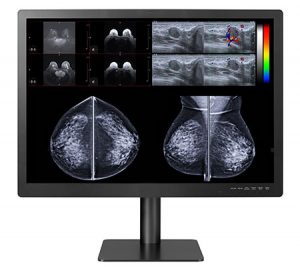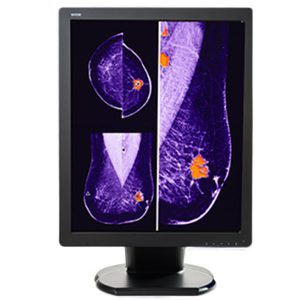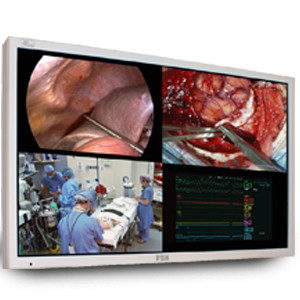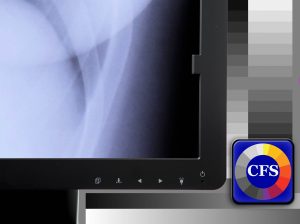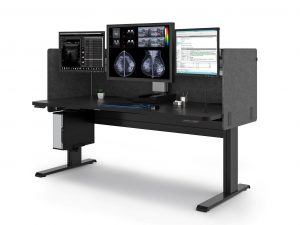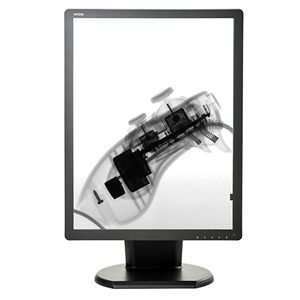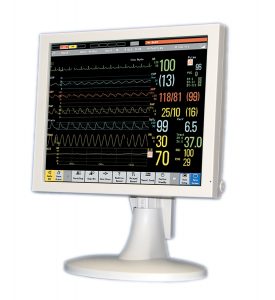Ergonomics in Interventional Radiology
Professionals in interventional radiology perform medical imaging during various minimally-invasive procedures such as X-ray fluoroscopy, computed tomography, magnetic resonance imaging, or ultrasounds. These imaging tests can help diagnose, cure, or alleviate symptoms of vascular disease, stroke, cancer, and much more.
Although times may vary depending on each individual case, interventional radiology procedures usually take approximately four hours. During any invasive procedure, the patient’s safety is the top priority, which is why a lot of interventional radiologists neglect basic ergonomic needs and ultimately, their health during procedures. This means interventional radiologists are regularly exposed to radiation, and lack of ergonomic equipment can lead to work-related musculoskeletal disorders in the long term.
In fact, in interventional radiology, the use of x-ray aprons, in association with awkward postures and non-ergonomic working conditions, might increase the likelihood of musculoskeletal disorders. The prevalence of neck and back pain at least once a week ranges from 50% to 60% for those who use lead aprons frequently. Additionally, not having the right equipment to work with, will likely impact their livelihoods, quality of life, and productivity in various ways.
Even though interventional radiology often overlaps with other specialties such as cardiology, vascular surgery, orthopedic surgery, and urology among others, implementing unique ergonomic considerations is key to ensure interventional radiologists’ safety in their place of work. Having an interventional radiology suite with ergonomic equipment is crucial to the prevention of musculoskeletal disorders (MSDs) and injury. By including ergonomic interventional radiology equipment in your facility, you are investing in the health, wellbeing, and productivity of interventional radiologists.
Here are a few things to consider to maximize your investment and efficiently plan for a new interventional radiology suite:
What makes up an efficient interventional radiology suite?
To optimize interventional radiologists’ performance, as well as improve their wellbeing while meeting patients’ needs, there are various crucial aspects to consider when planning for your suite. One of the key things to keep in mind is the types of procedures the equipment will be used for. There are often various professionals that are part of a procedure, such as nurses, surgeons, anesthesiologists, and radiologists. Understanding each professional’s role and the input will ensure you plan your investment accordingly.
Each area of expertise requires its own set of equipment and standards to follow during the installation. The Society of Interventional Radiology published “Resource and Environment Recommended Standards for the IR” where it details recommendations for the interventional radiology surgical suite.
Furthermore, The Society of interventional Radiology recommends: “The preparatory and recovery areas must be located in a setting with adequate electrical, oxygen, suction, anesthesia, and emergency services. There must be appropriate temperature and humidity control, air exchange and ventilation, lighting, computer terminals, PACS access, and monitoring equipment. Access to basic and advanced resuscitation equipment as well as necessary medications and fluids and adequate support area for supplies, nutritional support, ice machines, blanket warmers, and nursing space is also required.”
How is interventional radiology equipment different?
The main focus when purchasing new equipment should be to make interventional radiologists’ workflow more ergonomic and make patient care more personalized. The following is a list of essential equipment that is required in an interventional radiology suite:
-
Imaging equipment:
Limiting radiation exposure is key for IRs. While lead aprons are commonly used they can weigh up to 15 pounds and increase pressure in the lumbar or cervical discs. Instead, today’s mobile technology like CT scanners can provide improved quality without high radiation exposure. Because interventional radiology is used during invasive procedures, it’s key for both radiologists and surgeons to clearly see what they’re working on. Using surgical displays can ensure any issues that come up are addressed immediately. Ultimately, they make any procedure safer while ensuring issues can be observed in real-time during crucial operations.
-
Ultrasound equipment:
Awkward positions are often adopted by professionals performing ultrasounds. Upper extremities are usually sustained in forceful gripping for long periods of time and are often conducive to work-related MSDs. In fact, studies found that the average scan can lead to back, neck, and shoulder pain. To avoid the risk of MSDs, IRs should vary their exam postures throughout their working day.
Enter ergonomic workstations. Every radiologist needs the easy adjustability that an ergonomic desk setup will provide to stay productive. Ergonomic workstations that include adjustable heights, give IRs the possibility to switch their position, limiting the risk of postural and visual fatigue. Whether IRs are working sitting down or standing up, monitors should be placed just below eye level so that the neck muscles are relaxed at a downward viewing angle.
-
Medical grade computer monitors:
Today, medical grade monitors are revolutionizing the medical industry with their ability to provide faster, cost-effective, and convenient imaging services in contrast with traditional imaging departments in hospitals and third-party facilities. Using a large screen and a broadcast video system may allow an ergonomic multimodal visualization that ensures IRs, surgeons, and any other key personnel attending a procedure has a clear picture.
Why interventional radiology equipment is key to improving your radiology teams efficiency
Work-related MSDs don’t only cause pain and discomfort during procedures, but affect IRs during their time off work. This can lead to burnout, a response to stress that involves both physical and emotional exhaustion and cognitive weariness. The risk with healthcare professionals having burnout is that ultimately it can affect their cardiovascular health and cause depression. However, promoting the wellness of IRs can help prevent this.
Interventional radiology suite design was created to make a safer, more efficient, and productive work environment for IRs. By investing in an IR suite, you can further optimize the performance and well-being of IRs while significantly reducing the risk of MSDs in your healthcare facility.
Get started with an interventional radiology suite that will make your radiology practice more productive
 When it comes to making an important investment in your healthcare facility, you want to make sure you do so through a reliable company that has a thorough understanding of your needs. With over 30 years of experience in the high-performance display industry, Double Black Imaging provides ways to make imaging more efficient. Dedicated to building long-term customer relationships, they are committed to supporting quality products with exceptional customer service.
When it comes to making an important investment in your healthcare facility, you want to make sure you do so through a reliable company that has a thorough understanding of your needs. With over 30 years of experience in the high-performance display industry, Double Black Imaging provides ways to make imaging more efficient. Dedicated to building long-term customer relationships, they are committed to supporting quality products with exceptional customer service.
Double Black Imaging offers the latest mobile medical imaging technology as well as ergonomic workstations at competitive prices and can walk you through how to implement it in your healthcare organization. Contact Double Black Imaging for help with making the most of your purchase, or take a look at our latest ergonomic workstations.
